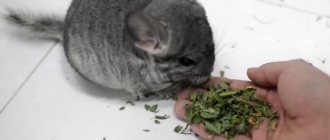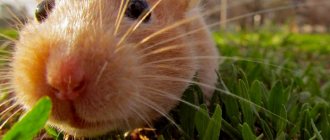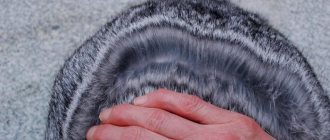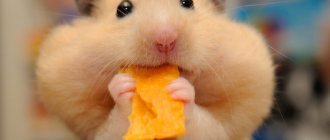- home
- Chinchilla
- Character and features
03/25/2019 Every chinchilla feels like a queen. Hence the character: royally rich in reactions and shades of behavior. Such animals are treated with care and individual traits are taken into account.
Are chinchillas smart?
Chinchillas learn commands less well than rats. However, they are not stupid, which is confirmed by interpersonal relationships in the pack. There are different sounds in the language of rodents:
- Calls: short, when the animal is looking for a fellow tribesman;
- communications: gentle murmurs when communicating with members of the pack;
- mating: from a squeak of resentment or soft notes that come from a male looking for a girlfriend;
- pleasure: made by the male after mating;
- demands: come from a hungry cub;
- complaints: crying of a chinchilla offended by its relatives;
- joy: when the cub is happy or has eaten;
- defense: short flashy;
- resistance: sound of protest;
- anger. An angry female is even capable of “shooting” urine at an object of irritation;
- problems between a male and a female: grunting signals from one and grinding sounds from the other;
- dangerous situation or pain: loud, sharp cry;
- danger alerts: “quacking.”
The cubs make a lot of sounds and can be heard almost constantly.
Rules and features of taming
When the chinchilla gets comfortable and behaves confidently, you can gradually begin taming. The rules for hand training young and adult animals are somewhat different.
Young chinchilla
The younger the chinchilla, the easier it is to tame. In these rodents, the formation of character ends by 7-8 months, so before this age they are more pliable and accommodating. To facilitate the process of taming a baby, you should use the following recommendations:
- Little chinchillas separated from their mother are very afraid of everything around them. Therefore, you should approach their cage carefully and slowly, and you need to talk to the baby in a quiet, gentle voice.
- To treat a young chinchilla during the taming process, only dry fruits and vegetables are allowed. Juicy foods can cause upset in the immature digestive system.
- From the first days you need to give your pet a nickname. So from the first days the animal will respond to the name and understand that the owner is addressing him specifically.
- You should not take home a chinchilla that is too small. Fluffies are breastfed for up to 2 months. Therefore, when buying such a baby, you will have to feed him with baby formula, and this is very troublesome.
However, if you still had to feed the chinchilla yourself, do not be upset. During the feeding process, the baby will get used to the new owner much faster. Therefore, the inconveniences caused by artificial feeding are fully compensated by the love and affection of the pet literally from the first days. Over time, such babies even begin to perceive the owner as a mother.
Adult chinchilla
Adult chinchillas are rarely kept as pets. But still, such cases sometimes occur. For example, after the removal of an animal from a cruel owner or when the owners move to another country. In any case, an adult pet experiences stress when it finds itself in a new family. After all, he is used to other living conditions or has been bullied, so he does not know what to expect from his new owners. To make the taming process as painless as possible, you must adhere to the following rules:
- For the first 2-3 weeks it is better not to contact the animal at all, just feed and clean the cage. Let the animal first get used to the new place.
- It is necessary to let your pet know about every approach to the cage so that he is not afraid. The signal can be given, for example, by clicking the tongue. Also, some owners use a clicker for these purposes - a small device that makes quiet clicking sounds when a button is pressed.
- If, during the process of taming, a frightened chinchilla bites the owner’s finger or palm, under no circumstances should you pull back your hand or scream. You will have to bravely endure the bite so as not to scare the animal even more.
- If the owner knows the old name of the animal, there is no need to change it. In the process of adapting to a new place, the chinchilla already experiences severe stress. If you start calling it by someone else's name, the pet will become even more confused.
- Since adult chinchillas take longer to get used to being handled, some impatient owners, in a fit of anger, begin to scold or hit the animal. Such behavior is strictly prohibited. This will not only not speed up the taming process, but, on the contrary, will only further alienate the pet from the new owner.
It is worth noting that in the process of hand training, both young and adult chinchillas go through the same stages. However, it takes approximately 2 times longer for an adult to complete each step. This is quite normal, there is no need to rush things, the pet will sooner or later be picked up.
If possible, it is necessary to find out what the adult animal was previously fed. Chinchillas react very sharply to a change in food, their condition deteriorates sharply, even to the point of death.
Characteristics of a chinchilla
Unfortunately, some animals do not become tame. Therefore, take into account the character of the chinchilla in advance when purchasing: soft and trusting, or nasty and timid.
This is determined by where the chinchilla grew up and how it was treated. If the owner groomed and cherished her, she easily makes contact. Raised on chinchilla farms, individuals are distrustful of people.
The character of the pet also depends on its gender.
Habits of chinchillas of different sexes
Among them, the dominance of females is common, which they transfer to relationships with humans. Even if they are not too tame, you can negotiate with them. One has only to take into account the unpleasant skill: “shooting” urine at an annoying object.
Males make contact much simpler and easier. They are peaceful due to their position in the pack and their inability to “shoot.” However, do not underestimate them: in moments of panic, they are capable of biting the offender.
What is the character of a chinchilla?
Compared to rats, fluffy dogs are less susceptible to human influence. He interacts with his own kind, almost without needing human attention.
However, being a wayward and gentle creature, the animal requires care at times. The character of the animal has an important feature: trepidation, which softens it.
As a member of the royal family, the chinchilla requires appropriate treatment. For example, you should not touch or pull her tail: by doing this you risk losing a trusting relationship. The chinchilla will go into your arms when it decides that it is so convenient for it.
Taming after adaptation
When the chinchilla has stopped showing signs of fear and does not hide when a person approaches, begin the taming process. Your task is to get your pet to take the treat from your hands. Then try to pick him up.
Prepare a treat that she will like - nuts, seeds, raisins. Slowly open the animal’s cage and present a treat in your open palm. Don't expect everything to work out right away. Chinchillas usually decide to treat themselves after about a week. Practice giving treats in the evenings, when the animals are most active.
As soon as the pet agrees to take the treat from your hand, trust is established. But it’s too early to pick up a chinchilla, especially if you grab it by the scruff aggressively! You will scare the animal and cause it to become aggressive. Before touching your pet, open the cage door and carefully place your hand on the bottom. It’s good to talk affectionately with the animal. Repeat the manipulation for several days - let the chinchilla make sure that the hand is not dangerous.
To attract your chinchilla, place a treat on your fingertips. When she understands that there is no danger, move her further away to encourage her to climb onto your hand. As soon as the animal is on your hand, you should encourage it, reinforce it with a positive action, for example, give it another treat.
To start petting your chinchilla, proceed carefully:
- First, gently scratch under your chin. Do not insist if the pet does not accept the affection and runs away into the cage. Try again regularly;
- When giving a treat from your hand, do not rush to remove it. Let the chinchilla linger around it longer, sniff it, and perhaps climb in. Do not interfere if the animal immediately jumps off;
- As soon as the open door of the cage attracts the chinchilla and it doesn’t mind sitting in your palm, carefully try to stroke it. First, point your finger towards the animal, and when it approaches, carefully stroke the fur on its face. Do not touch the mustache as it is a sensitive area. Don't worry if the chinchilla doesn't appreciate the affection and immediately runs away. The attempt to stroke must be repeated later;
- the animal allowed itself to be stroked - you can use your second hand. Gently stroke the back or chest. If it didn’t work right away, let the animal get used to it. Try stroking with both hands the next day.
Types of chinchilla temperaments
Like humans, rodents have 4 types of temperament.
Choleric
A real “battery with legs”. If he's not sleeping, he's always in action. Sleep occurs during the daytime and is interrupted by the slightest rustle. The movements are sharp, the gaze is constantly on guard, however, outwardly there are no signs of fear or anxiety. If you frighten a choleric person, he will begin to rush around in fear, not knowing his way. It is recommended to protect it from shocks.
Sanguine
Like a choleric person, he is active, but sleeps soundly during the day and is less timid. He is easy to train, he remembers commands well and carries them out readily.
Phlegmatic person
He moves little and sleeps soundly during the day. He prefers walking and frequent rest to running. He is less susceptible to stress, but is worse at remembering commands than a sanguine person.
Melancholic
The slowest of types. Its advantages are calmness, peaceful disposition, sound sleep. Disadvantages - craving for obesity, low learning ability, laziness.
Historical facts about the origin of the chinchilla
Where exactly and from what animal chinchillas began their own origin is unknown. During excavations in the Cordillera, archaeologists discovered the ossified remains of the most ancient likenesses of animal species. Based on the type of genetic structure, they resembled the modern chinchilla. It should be noted that the prehistoric type of this animal was large in size.
In accordance with a rough estimate, the oldest animal, to which the found remains belong, lived about fifty years ago, therefore, the chronological information of these animals contains more than a thousand years.
The first literary mentions of the chinchilla family date back to the mid-sixteenth century. Fluffy lumps were mentioned in the work of a Spanish historian who sailed to South America with the conquistadors.
Behavior of chinchillas at home
If the pet was recently acquired, or taken from a nursery, it is important to establish proper contact with it.
First, provide a spacious cage, food and leisure. Secondly, leave it alone for 2-3 days to adapt to new conditions.
After adaptation, you need to start establishing contact. It is acceptable to use affection, give him goodies, but do not touch him: this will cause stress, especially for an individual from the nursery.
The fact is that on chinchilla farms the animals are not treated very kindly, and in the first days they must get out of the habit of such treatment.
After gaining “credibility,” it is important to take the next step: observation. Just watch how your pet behaves. He can become playful, active and even noisy. This is normal and means successful adaptation.
Be prepared for the animal’s nightly “forays” and for insomnia from jumping, rearranging “furniture” and scattering hay and food. And if you want to cuddle your pet, don’t forget that he doesn’t take it well.
Adaptation in the first days
Any animal experiences stress from a sudden change of place of residence and new people nearby. The chinchilla owner’s task is to help her adapt to a new place. Follow these simple recommendations:
- do not pick up the animal in your arms in the first days - let it get comfortable, get used to the cage, smells and sounds;
- don't worry if the chinchilla hides when he notices you - this is a natural reaction, wait it out;
- in order not to frighten the animal, do not make noise, approach the cage carefully, without sudden movements;
- Talk affectionately to your pet more often to speed up the habituation.
Experienced breeders advise coming up with a sound to alert the chinchilla that a person is approaching. Having got used to it, the animals react to the owner more calmly. When establishing contact, be careful. Don't make the animal afraid.
How to tell if a chinchilla is afraid:
- she always carefully watches what the owner is doing;
- when approached, he instantly wakes up and takes a defensive stance;
- makes barking and snorting sounds;
- tries to bite;
- trembles, loses hair.
If the animal is scared or shows aggression, leave it alone. It's better to step away from the cage and let it calm down. The pet is not yet ready to communicate and cannot be released into the wild.
If your chinchilla is acting aggressively
In the wild, a rodent is prey for a predator. Hence the suspicious reaction to changes in diet, environment, etc. Almost always, animal aggression is associated with fear, pain or negative experience.
Important note: you should not cover the chinchilla with your palm, since the pet associates its shadow with the shadow of a bird of prey wanting to feast on “fresh food”.
Before biting, the animal gives signals of its intention. Pregnant females and those who have recently given birth become especially prone to aggression.
Biting symbolizes an attempt to establish contact with the object you like. However, a bite that draws blood indicates serious hostility. Grown-up males who want dominance can also test the owner’s teeth. In this case, it is recommended to stop the “power-hungry” by pushing him away from you with your palm or putting him in a cage.
An important point: the male should see the palm gently moved away, and not sharply withdrawn, as if in fright.
Do chinchillas have intelligence?
Experts confidently call the soft lump an intelligent and quick-witted creature. Quite a large number of chinchillas can manipulate the owner themselves, in order to beg for a treat or to take a walk outside the cage.
Cunning pets use something that the owner cannot resist. This is an offended little face, which he eagerly rushes to please with a delicious treat or get out of the cage. Understanding this hobby of the owner, the chinchilla can put on a deliberately unhappy and distressed expression on his face to achieve his own goals.
Why does a chinchilla wag its tail?
Tail wagging expresses the male's desire to please the female. This is normal behavior.
The male can violently sweep the floor with his tail, regardless of who is nearby: an individual of the same sex or the opposite. Or wave them in a friendly manner, greeting the hostess and caressing the palm.
Sometimes he gets it from the female: the beloved begins to furiously chase him around the cage, waving her tail like a flag in the wind. In everyday life, both use the tail to enhance emotions, to ask or demand something.
Outlining external data
Based on their appearance, chinchillas resemble large squirrels, and based on the way they move, they resemble bunnies. Fluffy animals have thick, thick and delicate fur, large dark eyes and large ears. It is with the help of the ears that chinchillas can reduce the overall temperature of the body, due to the fact that they have a dense capillary network.
The pet's body reaches 40 cm, and the tail - 15 cm. The forelimbs are shorter than the hind limbs, as a result of which their movement resembles hare jumps. Chinchillas have four toes on their hind legs and five on their front legs. With the help of their front paws, animals can carry out grasping movements.
A chinchilla has 20 teeth in its mouth; they grow throughout its entire life. Therefore, it is essential for an animal to be able to chew something.
How to make friends with a chinchilla
If you buy a young chinchilla, it is much easier to tame and bond with it than with an adult. The life history of a mature chinchilla can be very negative. In this case, it is not easy to restore trust in people. Only if the owner has enough patience can positive results be expected. This may take months. Therefore, you should carefully consider the capabilities and age of rodents.
To make friends with your pet, you first need to get rid of his fears. If you watch him closely, you may notice signs of fear. It looks like this:
- Any human movement causes alertness and stress in the animal;
- when approached, he quickly wakes up and takes a defensive position;
- there is a nervous tremor in the body;
- He snores and barks, trying to get into the stream of urine;
- tends to bite an outstretched hand;
- sheds pieces of hair.
Building trust is a slow process. Therefore there is no need to speed it up. The chinchilla is quite smart and remembers both positive and negative situations well. Only love and thoughtful actions will lead to the beginning of a trusting and happy relationship.
Is it possible to let a chinchilla out for a walk?
Chinchillas love to walk around the apartment.
This rodent is characterized by mobility, so it needs a large cage, in the presence of which walking around the apartment is not necessary. The cage should be equipped with a wheel, shelves, ladders, hammocks, tunnels - these devices will allow the harmonious development of the animal's muscles and skeleton.
The chinchilla cage can be equipped with all the necessary devices.
Is it possible to iron
If the owners approach the matter correctly, then the chinchilla will later feel comfortable and at ease in their hands. The fur of these animals is so soft, “plush” and delicate that, judging by the opinion of the owners of these rodents, touching it is pure pleasure.
Therefore, many owners of these animals constantly pick them up, stroke them on the head and scratch them behind the ears. Actually, you can do it. Chinchillas are not fragile animals; they are quite healthy and hardy.
However, stroking these animals, unfortunately, in most cases only brings pleasure to their owners. The chinchillas themselves, as they say, are neither warm nor cold from such actions of their owners. Such animals do not pet them as a sign of attention from their owners; they only appreciate the quality and taste of the food.
Despite the fact that chinchillas, unlike cats and dogs, always remain indifferent to the “caress” of their owners, these animals understand the intonation of the owner’s voice very well. Therefore, when taming an animal and communicating with it in the future, its owner should speak in a soothing and gentle voice. The chinchilla will most likely appreciate this and will soon completely trust the people living at home.
At what age is it better to start training and accustoming to commands?
If the owner has purchased a young cat, training can begin at 3 weeks of age. At this age, they are more active and more willing to establish contacts with people. It must be tamed by hand from the first days of life, if possible.
Until 7-8 weeks he explores the environment, at which time the commands “home” and “me” are well learned. During the first period of life, negative commands should be avoided so as not to injure the animal.
IMPORTANT: Chinchillas can be tamed at an earlier age, but it takes longer.
Precautions and safety precautions
Once an animal is domesticated, care must be taken to ensure its safety. Thanks to her natural curiosity, she is interested in everything that surrounds her. Chinchillas are cunning and dexterous.
They may suddenly jump up and run away quickly. Therefore, never leave windows and doors open. Before letting your pet out of the cage, remove all reflective objects from the room.
You should also cover the wires to prevent them from bending. The animal can chew through buttons on the owner's clothing. The rodent should not be in the same room with other animals for the first time.
Contact with other animals
The nature of the relationship with other pets among chinchillas is different:
- with rodents: hamsters, guinea pigs - they quickly find a common language;
- they retain their characteristic coldness towards cats, but at the stage of getting used to each other, conflict situations are not excluded;
- Chinchillas have a warm relationship with dogs , but at a young age, animal contact should be kept under supervision.
Does the animal have an unpleasant odor?
It is a common misconception that every pet has a foul odor. When you enter a house, you immediately feel what animal lives in it. However, the chinchilla refutes this stereotype. A healthy, furry animal is naturally odorless. The chinchilla is extremely clean and has no sweat glands.
It is rare for a pet to produce an odor without any abnormality. The cause of this anomaly is a dirty cell. Do not forget to promptly replace the bedding where the animal’s urine and excrement accumulates. Monitor the freshness of food and treats.
Stinky odors from a messy cage are also absorbed by your pet's fur.
To avoid this, it is important to clean and give her a sand bath in a timely manner.
Advice from veterinarians and experienced owners: how to toilet train a chinchilla
It is best to use commercially available scrap wood for your trash can. If a chinchilla does not want to go to the toilet and leaves its marks all over the cage, the owners need to train it.
To do this, every time an animal leaves its “mark” on the bottom of the cage, take the litter, wipe the affected area with it and put the sawdust back in the trash bin. The chinchilla will quickly learn by smell where to go to the toilet.
So the answer to the question of whether it is possible to tame a chinchilla in a trash bin is yes. But how often should you change the trash in your recycling bin? It is advisable to carry out this procedure every day. Only replace the dirty part of the trash can.
Description
Pet lovers prefer the small chinchilla. An adult weighs up to 700 g. According to external data, the animal looks like a squirrel and a rabbit at the same time. On the face there are large black eyes with vertical pupils.
Chinchillas' ears are large, up to 6 cm in diameter, and have a rounded shape. They help get rid of excess heat. Acute hearing allows one to recognize the approach of a predator over long distances . Inside the auricle there are membranes that cover the ears while taking baths. This prevents sand from getting inside.
There are long whiskers on the cheeks from 8 to 10 cm. The rodent's head is large, located on a short neck. The stocky body measuring 20–35 cm is supported by four legs: short front and long hind legs. Due to the difference in size, a chinchilla is capable of jumping up 100 cm, or even higher.
Strong claws help chinchillas quickly climb vertical surfaces. The rounded tail is covered with coarse hair. Its length reaches 15 cm. It helps to maintain balance while moving or jumping.
The animal is covered with beautiful fur, the hairs of which fit tightly to each other. The most common color: white belly, ash back.
In their natural environment, chinchillas behave inconspicuously. Because of this, their character and way of life have not been studied enough. But it is known that the animals live in colonies of 100 or more individuals . One hole is shared by 2 to 5 chinchillas. The peak activity of rodents occurs at night, when they crawl out in search of food.
The average lifespan of a rodent in the wild is about 20 years. As a pet, with proper care, chinchillas can live up to 18 years.











